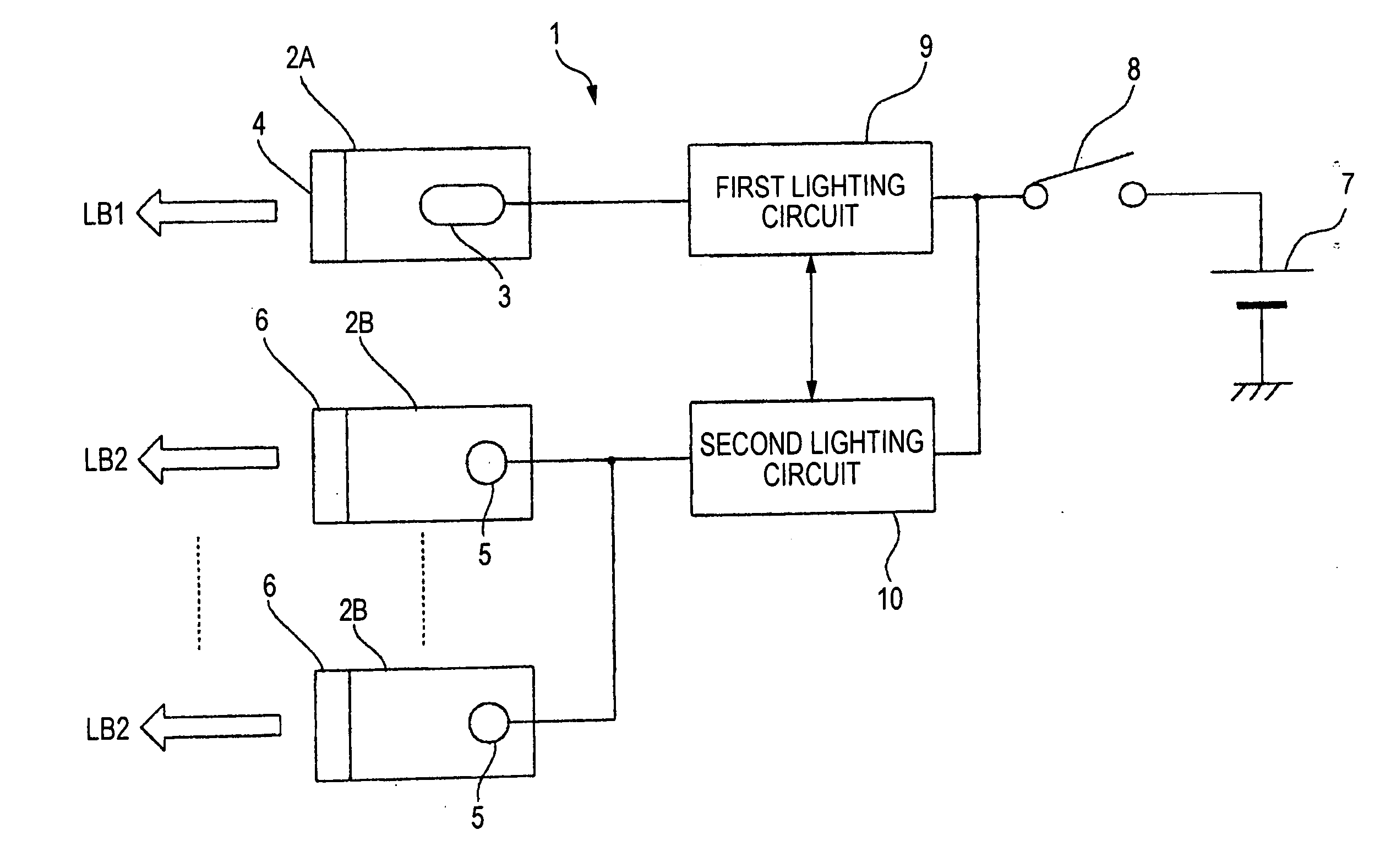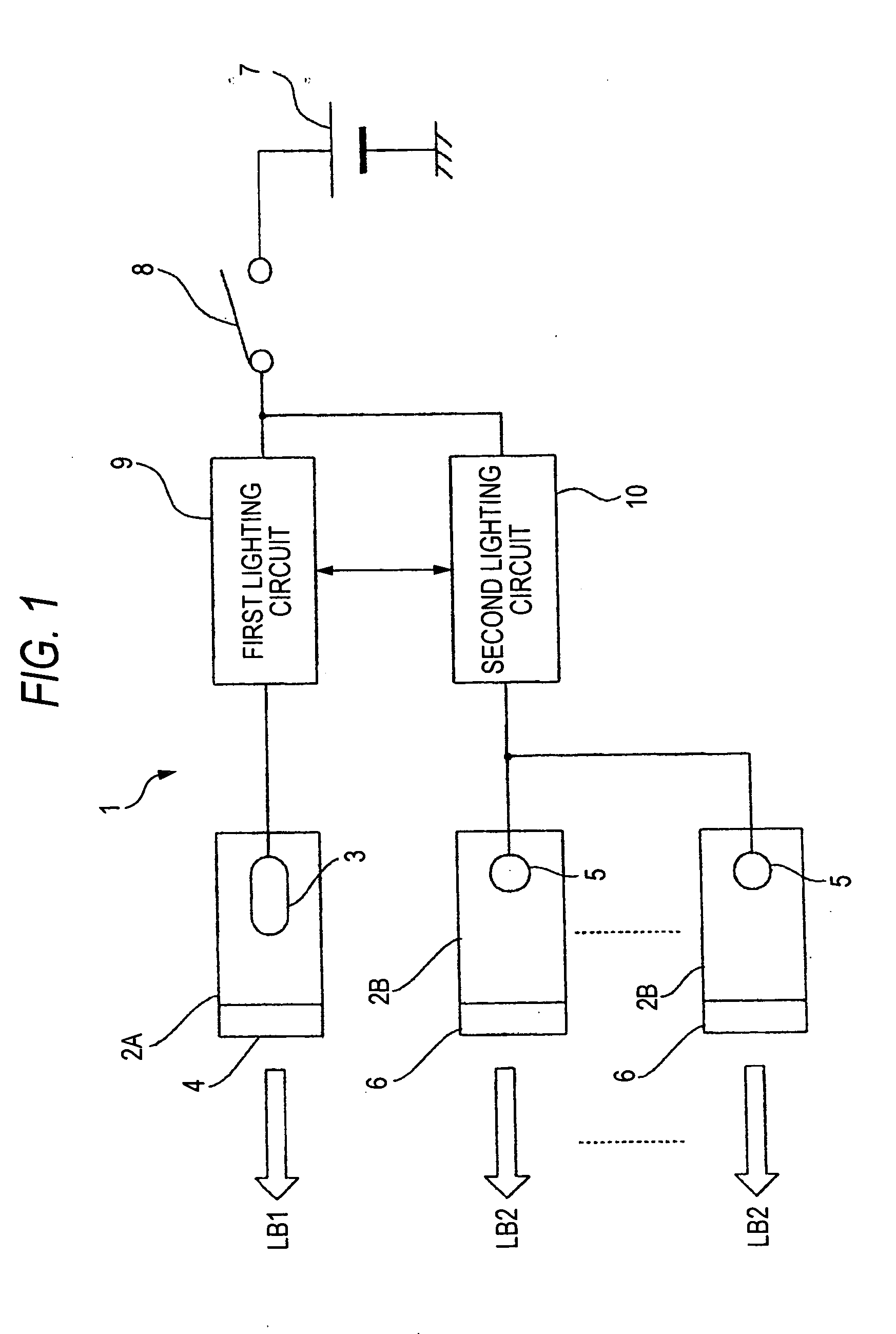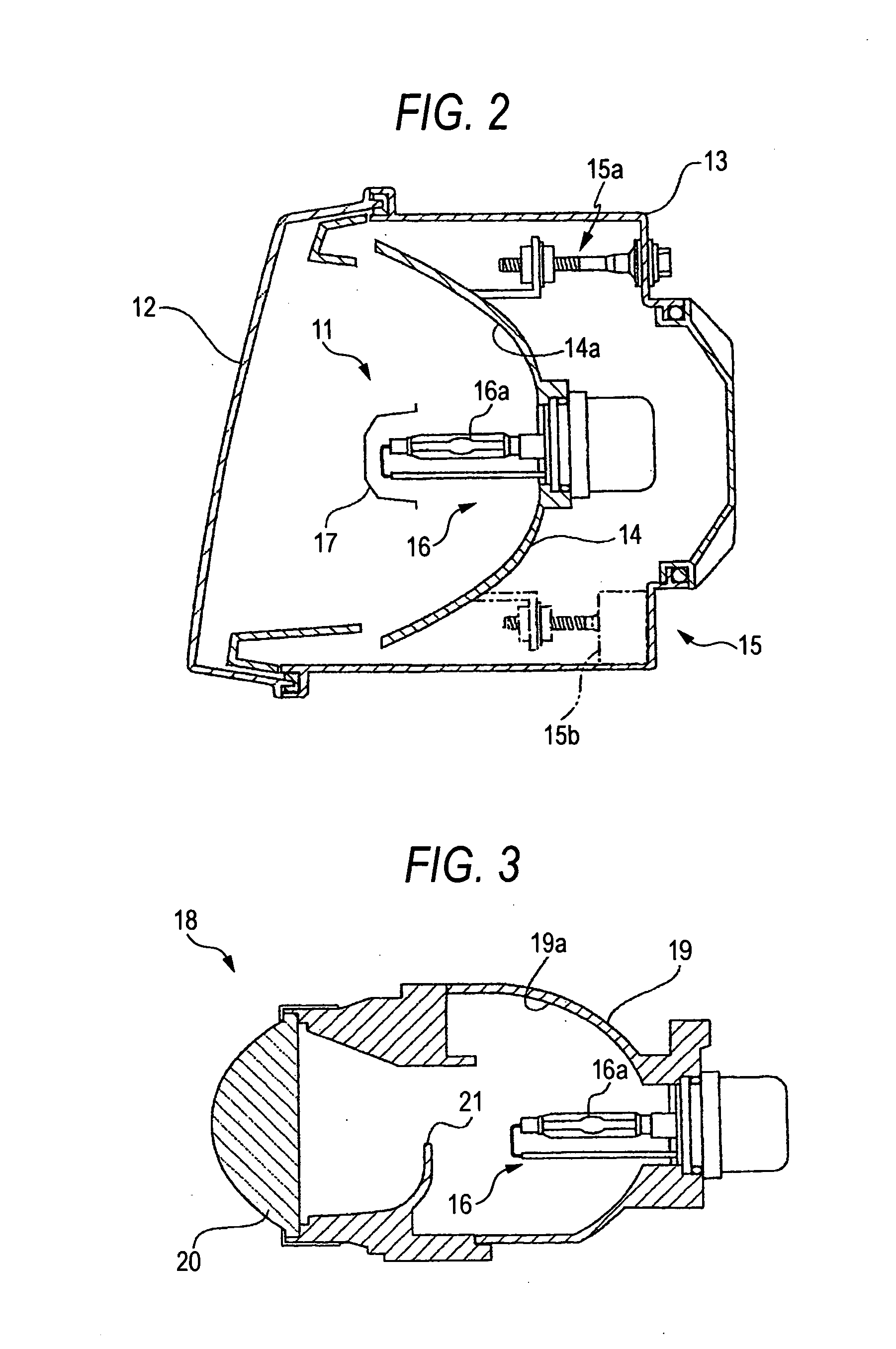Vehicle headlamp
a headlamp and headlamp technology, applied in the field of headlamps, can solve the problems of high cost, low utilization ratio of light sources, and high cost, and achieve the effect of reducing the starting time of the discharge lamp
- Summary
- Abstract
- Description
- Claims
- Application Information
AI Technical Summary
Benefits of technology
Problems solved by technology
Method used
Image
Examples
Embodiment Construction
[0034] Although the invention will be described below with reference to an exemplary embodiment thereof, the following exemplary embodiment does not restrict the invention.
[0035]FIG. 1 is a schematic view illustrating a basic configuration of a vehicle headlamp according to an exemplary embodiment of the present invention.
[0036] A vehicle headlamp 1 is used when a low beam is to be illuminated, and comprises a plurality of lamp units 2A and 2B. Among the lamp units, the first unit 2A employs a discharge lamp (or a discharge bulb) as a light source; and each of the second lamp units 2B employs a semiconductor light-emitting element, such as a light-emitting diode, as a light source.
[0037] An HID lamp (high intensity discharge lamp); e.g., a metal halide lamp, is used as a light source of the first lamp unit 2A. The color temperature of a discharge lamp 3 falls within a range of 4,000 to 5,000 K (kelvin). Generally, a discharge lamp has a high intensity, but requires some time unti...
PUM
 Login to View More
Login to View More Abstract
Description
Claims
Application Information
 Login to View More
Login to View More - R&D
- Intellectual Property
- Life Sciences
- Materials
- Tech Scout
- Unparalleled Data Quality
- Higher Quality Content
- 60% Fewer Hallucinations
Browse by: Latest US Patents, China's latest patents, Technical Efficacy Thesaurus, Application Domain, Technology Topic, Popular Technical Reports.
© 2025 PatSnap. All rights reserved.Legal|Privacy policy|Modern Slavery Act Transparency Statement|Sitemap|About US| Contact US: help@patsnap.com



